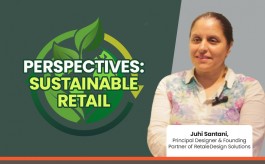What’s shaping new retail space developments?
By Retail4Growth Bureau | May 29, 2025
India’s retail sector is entering a new chapter, one defined by premium experiences, thoughtful design, and a carefully curated tenant mix, writes Jatin Goel, Executive Director, Omaxe Group.

Walk through any retail space in India’s leading cities, it’s no more about just shopping; it's about curated experiences, aspirational lifestyles, and spaces that invite people to linger. Over the years, the Indian retail market has greatly evolved, moving away from purely transactional formats to ones that blend consumption with leisure and engagement. This transformation is being fuelled by rapid urbanisation, higher disposable incomes, and a growing appetite for premium, immersive environments.
The high-street retail spaces in India are undergoing a makeover, shedding their unorganised past for a more polished, curated future. Among the metros, Delhi-NCR has pioneered retail innovation, reimagining traditional high streets as organised, Grade A retail destinations that prioritise design, accessibility, and experience. Further, as its core markets like Noida and Gurugram mature, hotspots like Faridabad are stepping into the spotlight as promising retail destinations for both investors and developers.
According to Anarock, India's retail sector is poised for historic expansion, with a record 16.6 million sq. ft. of Grade A mall space expected to be completed across the country’s top seven cities by the end of 2026. Leading this growth are Hyderabad and Delhi-NCR, which together will contribute nearly 65% of the new retail space, reaffirming their position as the country’s most promising consumption hubs.
Looking into another report by Cushman and Wakefield, leasing of retail spaces in shopping malls and major high streets rose 55% in the March quarter across 8 major cities to over 24 lakh sq ft., as retailers look to expand their businesses. This retail success does not just hinge on the location but also on the right brand mix that can attract and retain footfall. Developers are thoughtfully curating tenant portfolios that blend anchor brands with emerging D2C players, international labels, and local players. This approach creates a more dynamic and engaging environment, encouraging repeat visits and catering to a wider demographic. The goal is to make retail spaces into destinations in themselves, where shoppers find variety, convenience, and discovery under one roof.
Moreover, retail spaces are becoming increasingly social and experiential hubs that invite people to engage, unwind, and connect. As consumer expectations evolve, developers are reimagining retail environments to offer immersive experiences that go beyond traditional shopping. Art installations, landscaped green pockets, open-air event plazas, pop-up zones, and interactive brand showcases are now common features in modern retail formats. These elements not only enhance the visual appeal of a space but also encourage longer dwell times and greater footfall.
The focus further extends to the food and beverage (F&B) segment, which has become one of the most powerful footfall drivers in the retail sector. As malls and high streets evolve into social spaces, F&B offerings are playing a crucial role in enhancing dwell time and visitor engagement. From quick-service restaurants and boutique cafes to co-dining formats and destination dining experiences, the variety and quality of food options are becoming a major draw. As per a report by Cushman and Wakefield, segments like Food & Beverage, Beauty & Wellness, and Athleisure have significantly increased their footprint in the retail spaces, growing from just 6–8% pre-COVID to over 15% currently. Developers are strategically allocating prime spaces to F&B brands, recognising their ability to attract diverse customer segments throughout the day.
Besides, with ESG-conscious design influencing everything, from architecture to operations, sustainability is the new talk of the town. Developers are increasingly adopting green building practices by integrating energy-efficient HVAC systems, water conservation measures, daylight harvesting, EV charging infrastructure, and waste management solutions into their retail projects. These efforts are not only reducing the environmental footprint of retail spaces but also enhancing their long-term value and operational efficiency. Hence, green-certified retail spaces are gaining strong investor and tenant preference, particularly among global brands with sustainability mandates.
Thus, India’s retail sector is entering a new chapter, one defined by premium experiences, thoughtful design, and a carefully curated tenant mix. As consumers become more discerning and lifestyle-driven, the demand for integrated, engaging, and sustainable retail environments will only grow. Delhi-NCR, as a frontrunner, will remain a critical testing ground for these next-gen formats. And with high-potential hubs like Faridabad stepping into the spotlight, the region will continue to redefine what future-ready retail looks like in urban India.

_165_265.jpg)
_165_265.jpg)






Comments